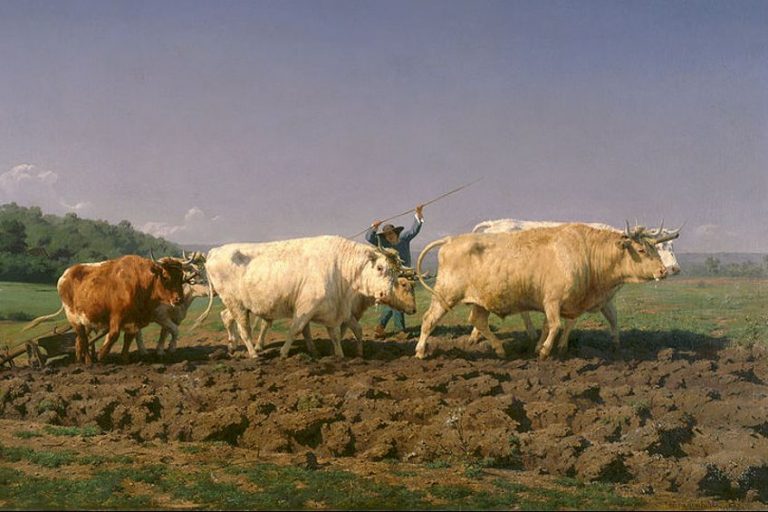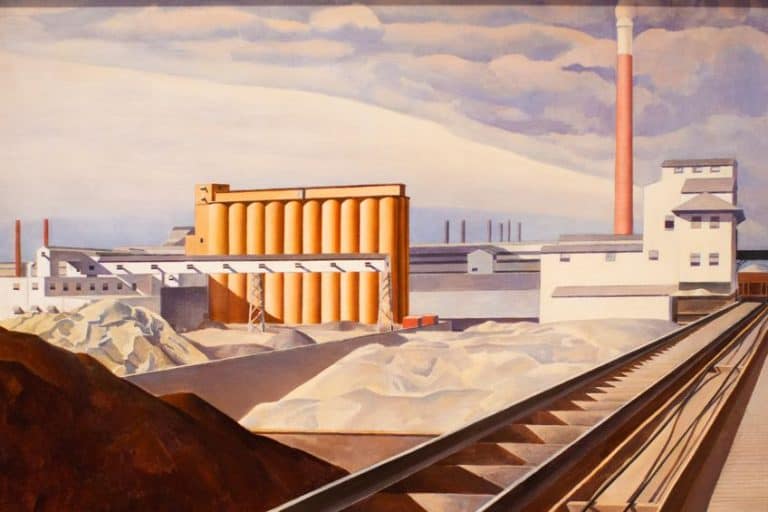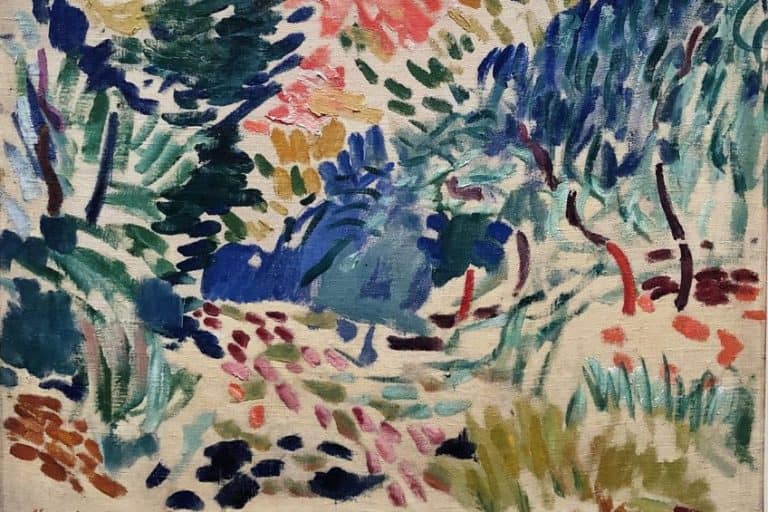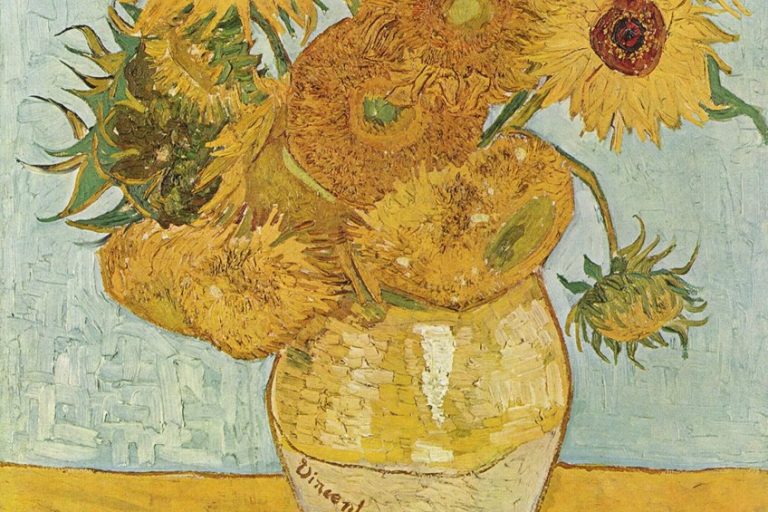Famous Oil Paintings – Highlights in the History of Oil Paint
Oil artworks are among the most famous visual arts around the world. Oil paint is created by mixing various pigments with a binding oil such as poppy seed or linseed oil. Many masters created their most famous works using oil painting on canvas as the medium. The history of oil painting dates as far back as the 7th century AD and since then, artists have left behind an admirable legacy of beautiful and famous oil paintings.
A History of Oil Painting
Oil artworks can be traced back to around 650 AD, where the oldest oil paintings still to exist can be found in the old historic settlement of Bamiyan in Afghanistan. This region is situated along what was once the important silk trade route and is most well known for the giant Bamiyan Buddhas. Behind the statues, in a large inner space carved from rock, one can find the earliest examples of oil painting on the walls of the rooms.
Quite a large variation in ingredients and pigments were displayed in the oil artworks, and the murals had even been covered with a varnish layer, suggesting that the technique was already quite developed and must have already been in use before the 7th century in Asia.
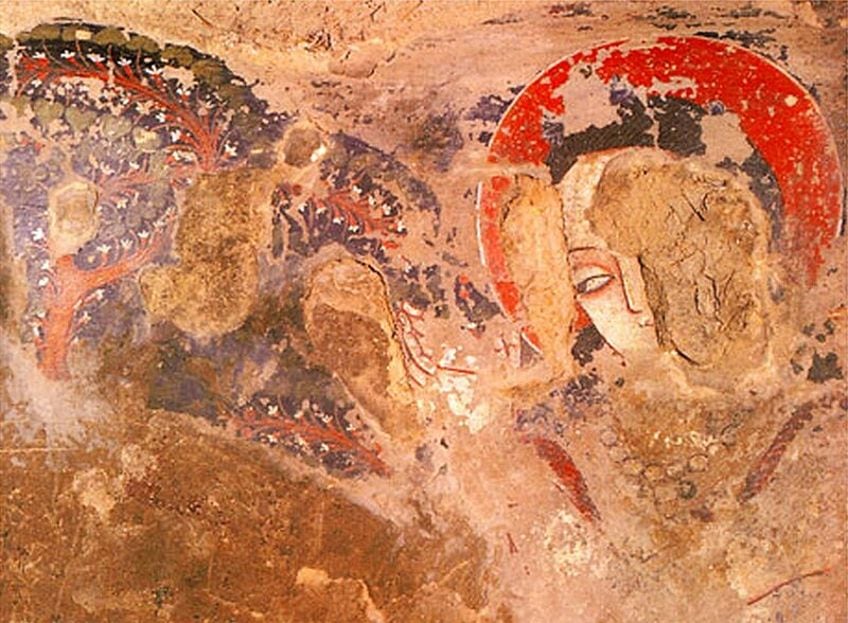
The invention of oil paints has long been credited to 15th-century European painter Jan van Eyck, however, written instructions on how to make oil paint could be found in manuscripts such as On Various Arts by Theophilus, which date even further back to around 1125 AD. At that time, it was most likely not oil painting on canvas but rather used for decorating carvings, sculptures, and wood paintings, particularly for outdoor application.
The artists from the Netherlands were the first to popularize the use of oil as a painting medium in the 15th century though, which then spread as a contemporary medium throughout Northern Europe and then on to Italy.
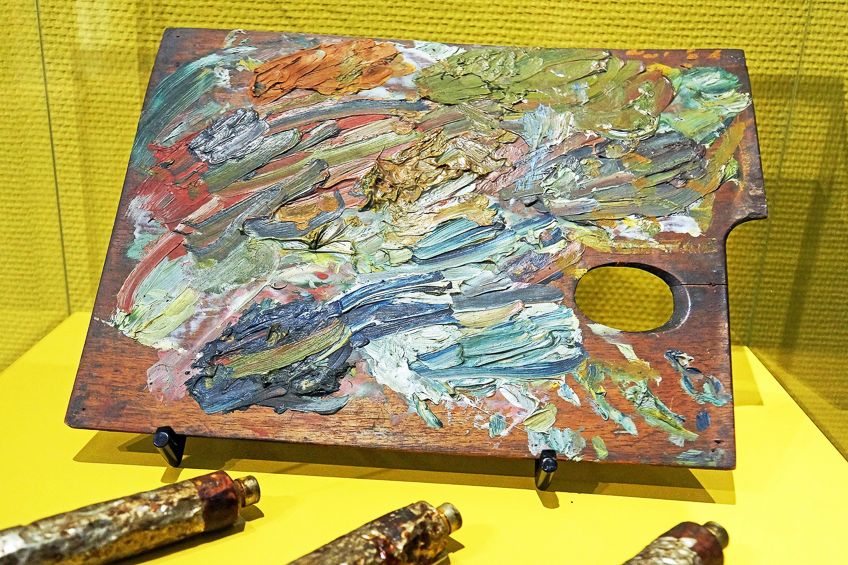
The first oil artworks were painted onto panels made from wood, but by the close of the 15th century, the use of canvas began to become more popular due to it being cost-effective and easy to move around from one place to another. Venice was a forerunner in the supply of canvas due to the abundance of sail-canvas in the city. By 1540, tempera on panel painting was a rare medium and Italy moved more towards creating oil artworks on canvas.
Throughout the following centuries, oil painting on canvas was used as the medium to express many different styles and artistic movements.
Famous Oil Paintings
Throughout the history of oil painting, artists have developed various techniques and styles by experimenting with the mixture of colors and application of the paint to the canvas, creating layers, shadows, and textures, helping them to paint some of the most famous masterpieces in existence. These paintings range from the most realistic and naturalistic paintings to Impressionist oil paintings, and even the most surreal and abstract paintings that have been admired throughout history.
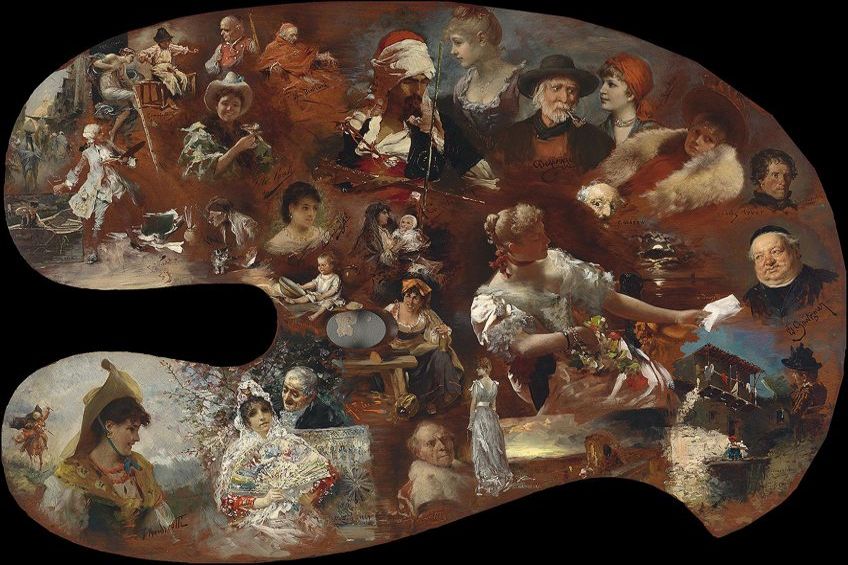
Mona Lisa (1506) by Leonardo Da Vinci
| Artist | Leonardo Da Vinci |
| Date Created | 1506 |
| Medium Used | Oil on Canvas |
| Dimensions of artwork | 77 cm x 53 cm |
| Current Location | The Louvre Museum, Paris |
The master artist Leonardo Da Vinci is renowned for painting the Mona Lisa, one of the most iconic images in the world. Created in 1506, this masterpiece of the Italian Renaissance is regarded as an archetype of its era, representing the finest qualities of the period that still captures the attention of millions of viewers annually in the Louvre Museum in Paris, where it is housed. Da Vinci was a native of Florence in Italy, and despite having never received a formal education, he was an exceptionally intelligent and creative human who is still today greatly admired for his contributions to many fields of study and art.
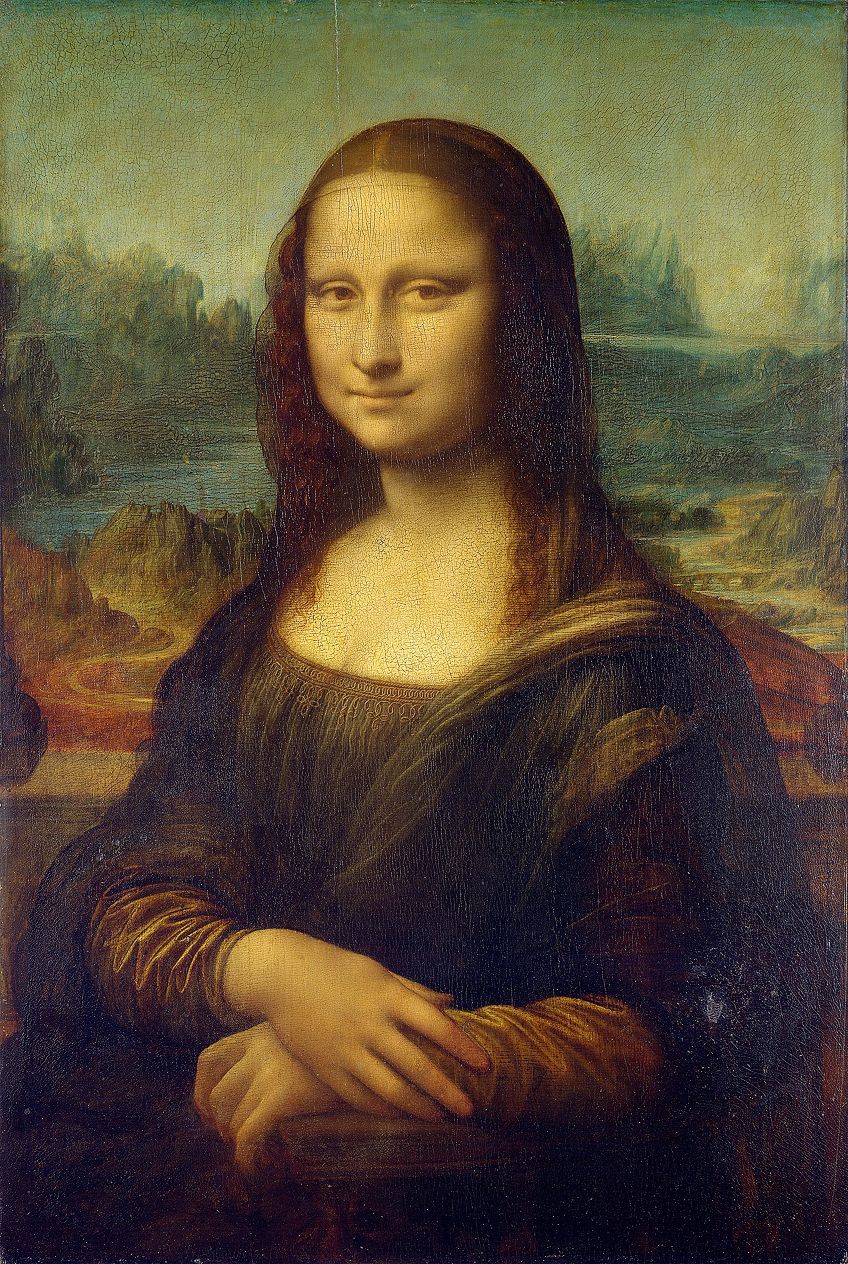
The Mona Lisa is easily among Leonardo Da Vinci’s most recognizable works, her smile alone has been the topic of debate for decades. Another debate that has continued through the years is who the painting is meant to portray. However, the dominant theory is that the famous oil painting portrait is a depiction of Lisa Gherardini, who was the wife of a nobleman by the name of Francesco del Giocondo. Typical of portraits from that era, the model is depicted with only the upper half of the body situated in front of a natural landscape.
Da Vinci accentuated the underlying connection between humans and nature by creating lines and curves that flowed from the female figure and continued into elements in the background.
The Night Watch (1642) by Rembrandt van Rijn
| Artist | Rembrandt van Rijn |
| Date Created | 1642 |
| Medium Used | Oil on Canvas |
| Dimensions of artwork | 363 cm x 437 cm |
| Current Location | Rijksmuseum |
The Night Watch was painted in 1642 by Rembrandt van Rijn, the famous Dutch artist. Currently housed at the Rijksmuseum in Amsterdam, it is the museum’s most well-known artwork. It is regarded as an important oil painting on canvas from the Dutch Golden Age. It was greatly admired for its large canvas and van Rijn’s masterful application of the use of light and shadow to create a dramatic effect known as tenebrism.

Through his use of extreme dark areas as well as areas filled with light, he was able to direct the viewer’s eye to the main focus of the painting: the two men walking in the foreground as well as the elderly female figure in the background. The two men are members of the company or voluntary military guard, depicted as they head out for the evening. The ensign carries the company’s colors behind the other two figures.
The painting is so large that the figures are practically life-size.
Las Meninas (1656) by Diego Velázquez
| Artist | Diego Velázquez |
| Date Created | 1656 |
| Medium Used | Oil on Canvas |
| Dimensions of artwork | 3,18 m x 2,76 m |
| Current Location | Museo del Prado, Madrid |
Las Meninas is the iconic artwork of Diego Velázquez, the highly renowned artist of the Spanish Golden Age. Created in 1656, this famous oil painting on canvas is appreciated by scholars for the strange complexities it presents to the viewer, raising questions about illusion versus reality and the interplay between the subjects in the painting with the person viewing it.
Due to these philosophical complexities, the painting has been analyzed more than most others of its time.

While the more subtle details of the paintings are still subjects for dispute, it is generally accepted among historians that the room represents the Royal Alcazar of Madrid’s main chamber. All of the people depicted are figures of the Spanish court, including Infanta Margaret Theresa, accompanied by a chaperone and her maids of honor. A bodyguard is also present, as well as two dwarf servants and a large dog. The artist can also be seen in the painting, in the center of the canvas, looking directly at the viewer. The king and queen are thought to be the figures that can be seen in the background.
Girl With a Pearl Earring (1665) by Johannes Vermeer
| Artist | Johannes Vermeer |
| Date Created | 1665 |
| Medium Used | Oil on Canvas |
| Dimensions of artwork | 44.5 cm x 39 cm |
| Current Location | Mauritshuis Museum, The Hague |
Girl With a Pearl Earring is the Baroque period masterpiece of the Dutch artist, Johannes Vermeer. Known for his intimate portrayals of the interior domestic lives of normal middle-class citizens. As with all of his paintings, Vermeer took great care in adding layers and details in a slow and methodical manner, paying careful attention to the application of light and dark areas in his compositions to create a dramatic effect as can be observed in this famous oil painting portrait.
This famous oil painting is not only regarded among Vermeer’s most renowned oil artworks, but also among the most recognizable oil painting portraits throughout the history of art.
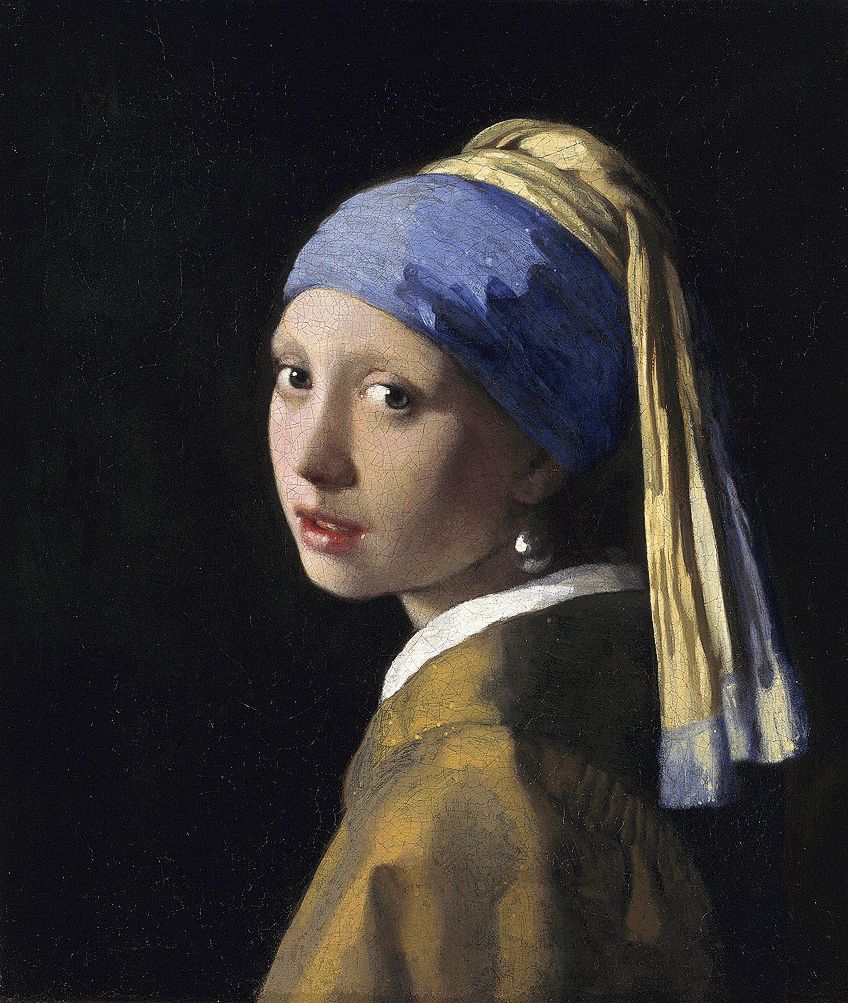
Over the course of several centuries, the painting has been known by many names, including the “Dutch Mona Lisa”, until it eventually got its current title from the eating that is a prominent feature of the artwork. However, the exact material that the earring was meant to represent is up for debate, with some scholars arguing that it was more likely a representation of a tin ring than a pearl ring due to its reflective surface and size. The painting has undergone several attempts at restorations, which have since revealed many long-hidden characteristics of the painting, such as the fact that the background was originally dark green.
Whistler’s Mother (1871) by James McNeill Whistler
| Artist | James McNeill Whistler |
| Date Created | 1871 |
| Medium Used | Oil on Canvas |
| Dimensions of artwork | 144.3 cm x 162.3 cm |
| Current Location | Musee de Orsay in Paris |
Whistler’s Mother was painted by the American-born artist James McNeill Whistler in 1834. Known for artworks that incorporated sentimental and moral undertones, he was most prolific during the period known as the American Gilded Age. The artist spent most of his time in the United Kingdom though and is regarded as the father figure of Tonalism. The figure of his mother sitting in a chair is another iconic image in the history of art and popular culture.
As with his other works, the painting portrays the quintessential archetype of the mother figure, using both the feeling of moral authority and sentimentality as methods of achieving the feeling he desired to express.
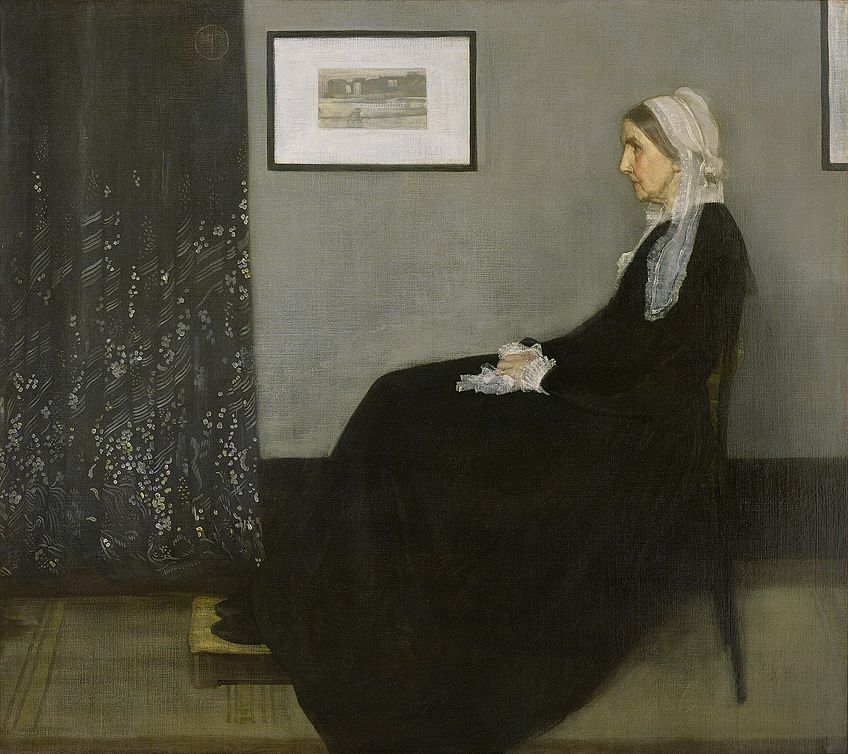
This famous oil painting is also known by the alternative title Arrangement in Grey and Black no.1. Historians believe that the oil painting portrait was created in 1871 when his mother was living in the city of London. Although much discussion about the painting has arisen due to it being a portrayal of his mother, some historians have noted that his mother may have possibly been a fill-in model due to the original model not being able to sit in on the session as planned.
Originally, James McNeill Whistler had begun the painting with his mother in a standing position, but being in her late 60s at the time, she was eventually painted in a seated position due to her legs growing tired from the long periods of standing.
Impression, Sunrise (1872) by Claude Monet
| Artist | Claude Monet |
| Date Created | 1872 |
| Medium Used | Oil on Canvas |
| Dimensions of artwork | 48 cm x 63 cm |
| Current Location | Musée Marmottan Monet, Paris |
Claude Monet created Impression, Sunrise in 1872. His philosophies of putting the painter’s subjective experience before the objective reality of nature were highly influential in the formation of Impressionist oil paintings and the Impressionism movement. In fact, this painting is where the movement adopted its name from. The famous artwork portrays the sun rising over the ocean, as viewed from the position of the port at Le Havre. The rowboats and the pulsing red sun draw the viewer’s eye into the composition, in the background more fishing boats can be made out as well as the vague outlines of ships and masts.
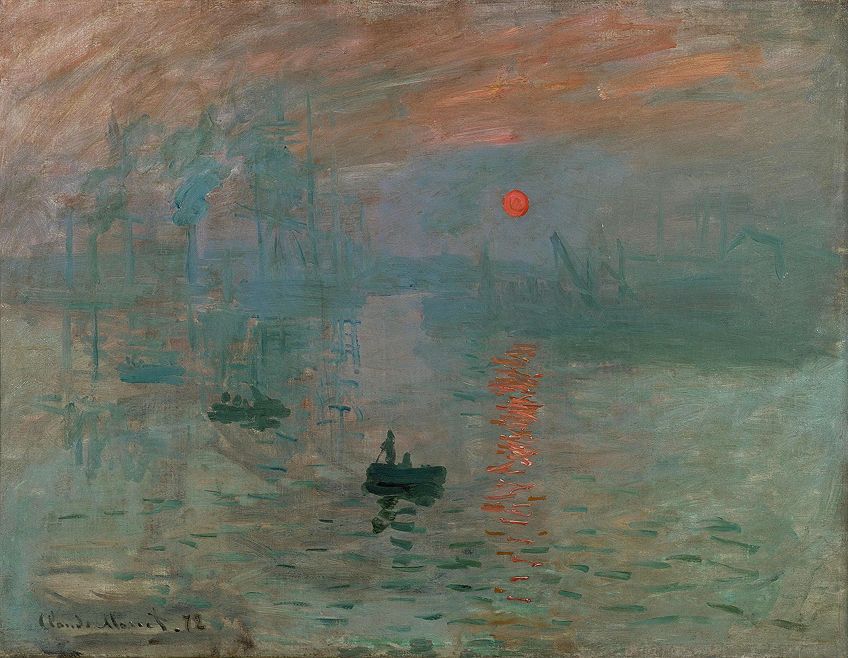
The painting was exhibited for the first time in 1884 at a show in Paris, which later became known as the Exhibition of the Impressionists. What makes this one painting stand out among all other Impressionist oil paintings is the fact that the entire movement had been named after it, an indication as to the amount of influence it had on other French artists from that period.
This famous oil painting was stolen from the Musée Marmottan Monet in 1985, but was recovered and put back on display in 1990.
A Sunday Afternoon on the Island of La Grande Jatte (1884) by Georges Seurat
| Artist | Georges Seurat |
| Date Created | 1884 |
| Medium Used | Oil on Canvas |
| Dimensions of artwork | 2.08 m x 3.08 m |
| Current Location | Art Institute of Chicago |
This painting by Georges Seurat is the most well-known work of the artist and is a prime example of the pointillist technique which had been executed over a large canvas. It is also considered to be a forerunning example of the Neo-Impressionist movement. The famous oil painting depicts a Parisian park situated along the banks of the Seine River, and various groups of Parisians enjoying the afternoon in the sunny park.
The painting took a few years to complete, going through many stages of preliminary sketches and drawings and a rework of the original.

He started in May of 1884 and wrapped it up in May of 1886, exactly two years later. Many hours were spent sitting in the park and making sketches of various objects, landscape features, and figures, to try and get the perfect forms and layout. By applying a series of small dots of different colors to create hues, he pushed the usual style of oil painting to new and innovative directions with his creation of pointillism.
The Starry Night (1889) by Vincent van Gogh
| Artist | Vincent van Gogh |
| Date Created | 1889 |
| Medium Used | Oil on Canvas |
| Dimensions of artwork | 74 cm x 92 cm |
| Current Location | The Museum of Modern Art |
The Starry Night was created by Vincent van Gogh, the famous Dutch artist, during a tumultuous period of the famous painter’s life. Most of his life was marked with dark episodes though, and it was only after his suicide that he gained that fame that eluded him throughout his career. This fine example of his post-Impressionist oil paintings is characterized by his use of expressive brushstrokes and a vivid color palette.
Known for famously cutting off his ear, the artist suffered constantly from psychosis and delusions. This would eventually lead to a detention stint in an asylum for mentally unstable people. It was there, in 1889, that he painted this masterpiece.
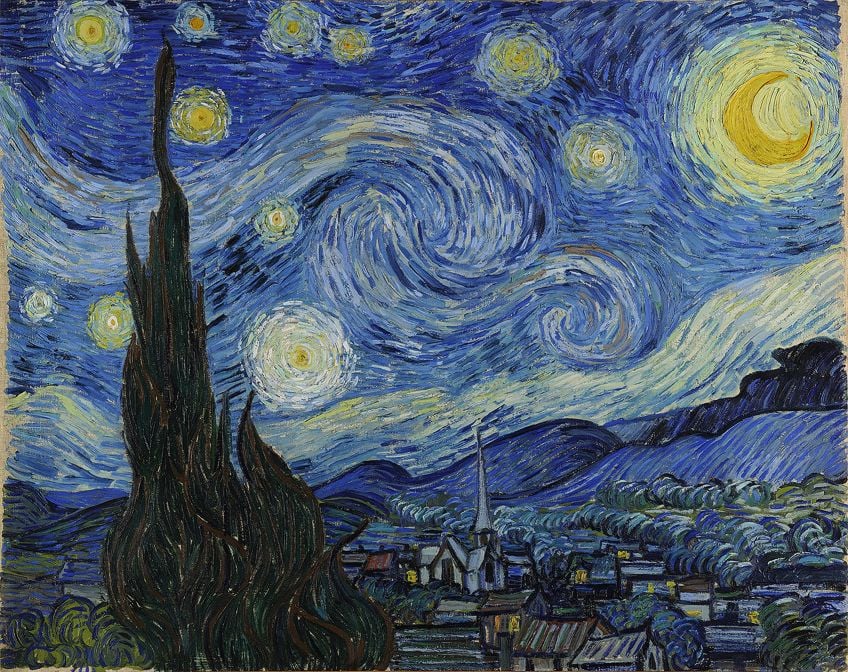
Depicting a landscape just before the break of dawn, it is believed to be the view from his asylum room window. Certain elements of the composition are almost peaceful, such as the rolling waves of blue and the illumination from the pulsating stars, but the painting also reveals disturbing undercurrents of turmoil that can be observed in van Gogh’s use of spirals and jagged features on the landscape.
The Old Guitarist (1903) by Pablo Picasso
| Artist | Pablo Picasso |
| Date Created | 1903 |
| Medium Used | Oil on Panel |
| Dimensions of artwork | 122.9 cm × 82.6 cm |
| Current Location | Art Institute of Chicago |
This oil on panel masterpiece is one of Picasso’s earlier works, yet is just as famous as his later pieces and was created from 1903 until 1904. The painting depicts a blind old man that is playing guitar on the streets of Barcelona in Spain. He was weary and sympathetic towards the people who struggled with poverty, as he himself had done.
During this period of his career, Picasso was influenced by several movements including Symbolism, Impressionism, and Post-Impressionism, as well as Modernism.
During this period he himself was living in poverty and his friend had just committed suicide, resulting in his blue period. The only shift in color in the composition can be found in the brown guitar which the man holds. Modern X-rays of the painting have revealed that three separate figures were painted behind the guitar at some point. The masterpiece can be viewed in the modern era at the Art Institute of Chicago.
The Kiss (1907-1908) by Gustav Klimt
| Artist | Gustav Klimt |
| Date Created | 1907 – 1908 |
| Medium Used | Oil and Gold Leaf on Canvas |
| Dimensions of artwork | 180 cm x 180 cm |
| Current Location | Österreichische Galerie Belvedere |
The Kiss was painted in 1907 at the peak of Klimt’s golden period, created in the Art Nouveau style. It portrays two figures clothed in decorated robes, caught in a moment of intimate embrace. Currently housed at the Österreichische Galerie Belvedere museum, it is regarded as one of his most masterful works, despite not being the first of his paintings to be based on this theme, it was the most prominent and embodied his style perfectly.
Historians are not exactly sure who the models were for this painting, but some have speculated that it was his long-time friend Emilie and himself that acted as the models.
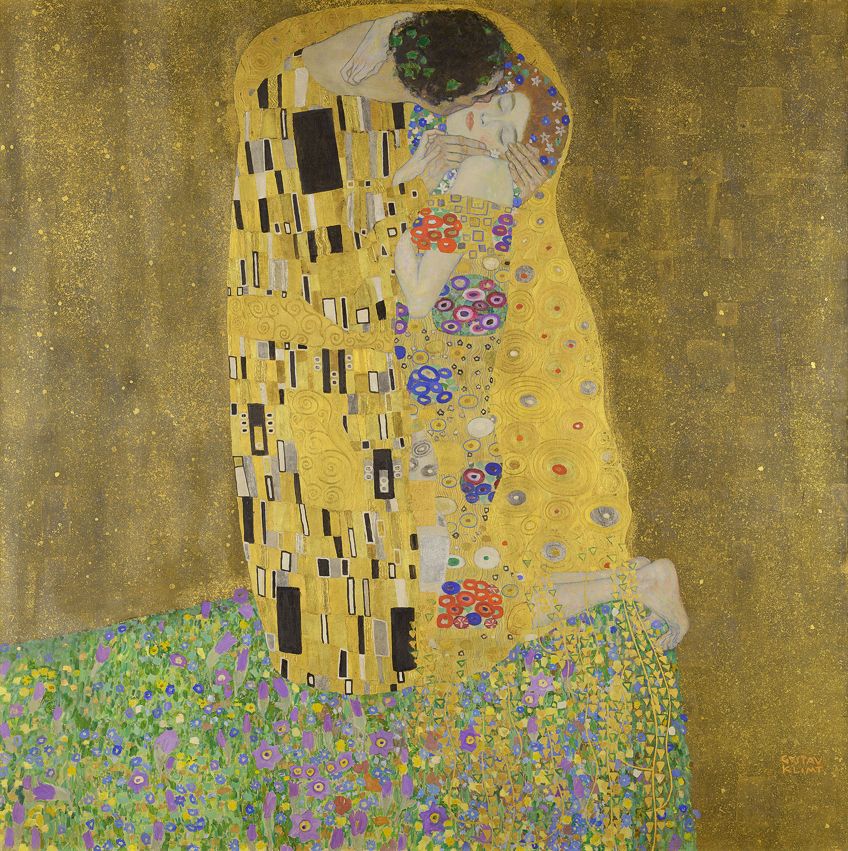
Others have suggested that the female in the picture resembles one that has featured in several other of his works, known as Red Hilda. Klimt painted the couple backed by a flat gold background. They are positioned near a meadow’s edge, with flowers growing up to the point beneath her feet. They both wear crowns, his crown is made of vines, and hers is made from flowers.
American Gothic (1930) by Grant Wood
| Artist | Grant Wood |
| Date Created | 1930 |
| Medium Used | Oil on Beaverwood |
| Dimensions of artwork | 74 cm x 62 cm |
| Current Location | School of the Art Institute of Chicago |
American Gothic was painted by Grant Wood in 1930 during the American Great Depression and is regarded as an iconic artwork from the American regionalist movement. Currently housed in the Art Institute of Chicago, it depicts a farmer standing in front of a house next to his daughter, although many people have often mistakenly thought that she was actually his wife.
One of the most recognizable paintings in American art history, it is named after the architectural style of the house behind him, specifically the pointed arch window.
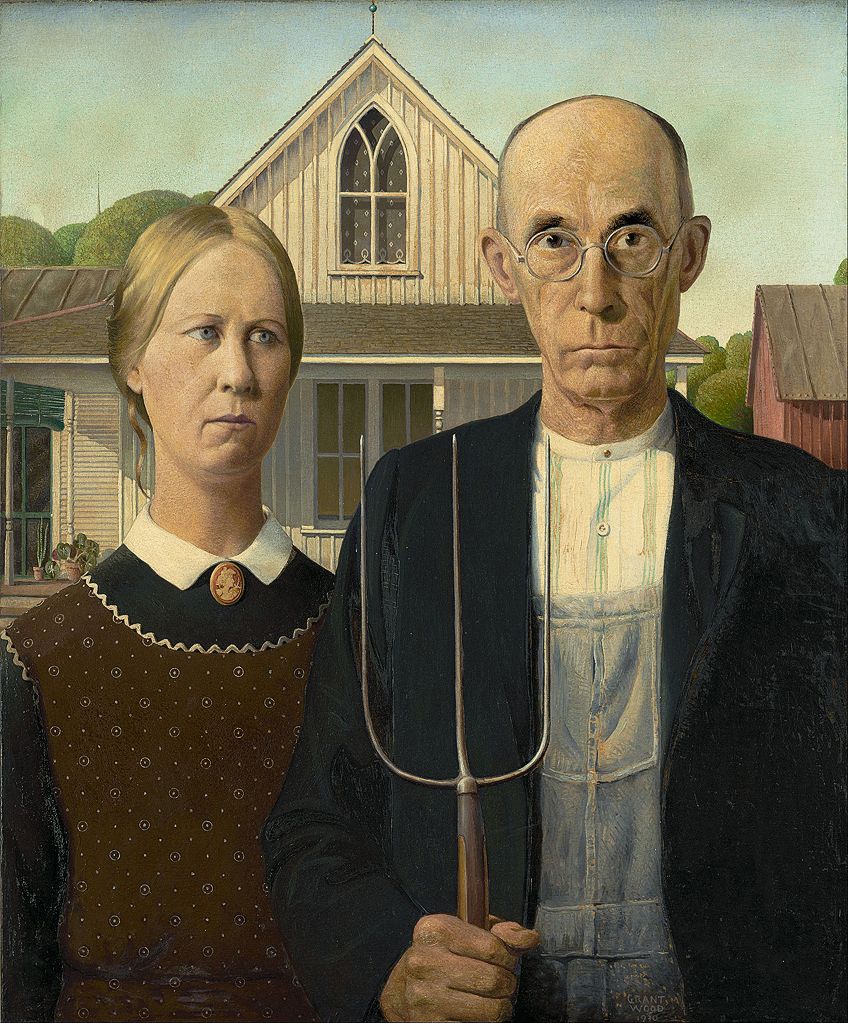
The artist was inspired by the now-famous house which is situated in Eldon in Iowa and wanted to paint what he imagined the kind of people who lived in such a house would look like. The models for this famous oil painting on canvas were his sister Nan Wood Graham, and Dr. Byron Mckeeby, the family’s dentist. To evoke a sense of the rural Americana in the 20th-century, the woman was dressed in an apron with a traditional colonial print and the farmer figure wore a suit jacket over overalls and was painted holding a pitchfork.
The Persistence of Memory (1931) by Salvador Dalí
| Artist | Salvador Dalí |
| Date Created | 1931 |
| Medium Used | Oil on Canvas |
| Dimensions of artwork | 24 cm x 33 cm |
| Current Location | The Museum of Modern Art |
The Persistence of Memory was created in 1931 by Spanish Surrealist Salvador Dalí. Not only is the painting iconic within the surrealist movement, but is also recognized as one of the most famous oil paintings in the world. Since it was first exhibited, the painting has become a part of popular culture and has been satirized and referenced numerous times mainly due to the melting clocks.
These were central to his study of concepts such as hardness or softness of time in art.
Interpretations of this artwork have differed greatly due to the surrealistic nature of the oil painting on canvas. Some people had theorized that it is a visual representation of the Theory of Relativity as proposed by Albert Einstein, but according to Dalí, it was a surrealist interpretation of a piece of camembert cheese melting in the sun. An abstract form can be made out in the center of the picture, which displays human characteristics and has been seen in a few of his paintings, regarded as something of a self-portrait.
Guernica (1937) by Pablo Picasso
| Artist | Pablo Picasso |
| Date Created | 1937 |
| Medium Used | Oil on Canvas |
| Dimensions of artwork | 3.5 m x 7.7 m |
| Current Location | Museo Reina Sofía, Madrid |
Guernica is regarded as one of Pablo Picasso’s most well-known artworks and was painted during the Spanish Civil War in 1937. The famous Spanish artist painted it in Paris at his home, after the Germans and Italians bombed the Spanish country town of Guernica. This oil painting on canvas was created in black and white to emphasize the bleak and stark nature of the event, with all the color of love drained from it, and it depicts humans and animals suffering due to the chaos and violence which engulfs them.

His graphic depiction of war’s atrocities resulted in the painting being regarded by critics as one of the most important paintings to display an anti-war message in history. It managed to bring large-scale awareness to the events that occurred during the period of the Spanish Civil War. The painting measures 3.49 meters in height and 7.76 meters in width and the images on the large canvas are prominently displayed, including a woman that is screaming in terror, a horse that has been gored, a bull, flames, and dismembered limbs.
The famous oil painting is currently housed at the museum dedicated to 20th-century art, the Museo Reina Sofia which is situated in the city of Madrid in Spain.
Cow’s Skull: Red, White, and Blue (1931) by Georgia O’Keeffe
| Artist | Georgia O’Keeffe |
| Date Created | 1931 |
| Medium Used | Oil on Canvas |
| Dimensions of artwork | 101 cm by 91 cm |
| Current Location | Metropolitan Museum of Art |
Cow’s Skull: Red, White, and Blue was painted by the most prominent figure in American Modernism, Georgia O’Keefe. Her art was renowned for breaking the boundaries between art styles, such as her unique method of combining elements of representational and abstract art. During this period in American art, artists sought to create pieces that were distinctively American in subject and tone, hoping to create a unique identity for themselves.
O’Keeffe set herself apart from other artists during the same period, by creating artworks that did not depict the popular images of American culture, but reflected the real American west lifestyle more accurately.
The painting consists of a cow skull which is positioned towards the top of the canvas. Behind the sun-bleached-looking skull is a draped cloth background with a center vertical stripe down the middle. On either side of the painting is a red vertical stripe, bringing to mind the American flag. The oil on canvas painting measures 101 cm by 91 cm and is currently housed at the Metropolitan Museum of Art.
The Two Fridas (1939) by Frida Kahlo
| Artist | Frida Kahlo |
| Date Created | 1939 |
| Medium Used | Oil on Canvas |
| Dimensions of artwork | 1.74 m x 1.73 m |
| Current Location | Museo de Arte Moderno, Mexico City |
The Two Fridas painting was painted in 1939, shortly after Frida Kahlo and Diego Rivera were divorced. The oil painting depicts the two sides of her personality. On one side sits a broken-hearted version that is dressed in traditional clothing while the version sitting next to her is portrayed as modern and independent. Origins of the inspiration for the painting can be traced back to her childhood, with Kahlo writing in her journal that the image was based on her memories of an imaginary friend.
She would, however, later disclose that it represented the loneliness and separation she felt after they had been separated.
In this oil painting portrait, the two figures are seated and holding hands. Both hearts of the figures are clearly visible, with the traditional version of Kahlo on the left’s heart portrayed as torn open. She holds the end of one side of the main artery on her lap, closed with pincers, yet it bleeds profusely on her lap. Her inner turmoil is reflected in the stormy sky. The National Institute of Fine Arts in Mexico City acquired the painting in 1947 for 4,000 Pesos, the most the artist ever received for her work.
Today we have learned about the famous oil paintings that have been created by the masters of the craft. From the early works of artists like Leonardo da Vinci to the various styles that developed in the later centuries, many artists have chosen oil painting on canvas as their preferred medium. Oil artworks are highly revered and will hopefully be around for a long time for us to appreciate and enjoy.
Frequently Asked Questions
What Is Oil Paint Made From?
Oil paint is made from mixing various pigments with a binding oil. Oils that were commonly used are safflower oil, walnut oil, and poppyseed oil, although the most popular binding oil used by artists was linseed oil.
Were Canvases Always Used for Oil Paintings?
The very first oil paintings were found in Afghanistan and were painted on the walls of rooms that had been carved out of rock behind the famous Buddhas. Many years later, artists would paint on sculptures and carvings. Then they eventually moved on to surfaces like wood panels. Canvases came later, yet were soon the preferred material to paint on as they were affordable and could easily be transported from one place to another due to not being too heavy to carry around.
Isabella studied at the University of Cape Town in South Africa and graduated with a Bachelor of Arts majoring in English Literature & Language and Psychology. Throughout her undergraduate years, she took Art History as an additional subject and absolutely loved it. Building on from her art history knowledge that began in high school, art has always been a particular area of fascination for her. From learning about artworks previously unknown to her, or sharpening her existing understanding of specific works, the ability to continue learning within this interesting sphere excites her greatly.
Her focal points of interest in art history encompass profiling specific artists and art movements, as it is these areas where she is able to really dig deep into the rich narrative of the art world. Additionally, she particularly enjoys exploring the different artistic styles of the 20th century, as well as the important impact that female artists have had on the development of art history.
Learn more about Isabella Meyer and the Art in Context Team.
Cite this Article
Isabella, Meyer, “Famous Oil Paintings – Highlights in the History of Oil Paint.” Art in Context. September 14, 2021. URL: https://artincontext.org/famous-oil-paintings/
Meyer, I. (2021, 14 September). Famous Oil Paintings – Highlights in the History of Oil Paint. Art in Context. https://artincontext.org/famous-oil-paintings/
Meyer, Isabella. “Famous Oil Paintings – Highlights in the History of Oil Paint.” Art in Context, September 14, 2021. https://artincontext.org/famous-oil-paintings/.





